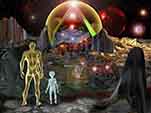|
RMN is Reader Supported
Our Goal for
DEC 8 - JAN 5:
$1,450
Click Widget
or Click Here to contribute.
Checks & Money Orders:
Raye Allan Smith
P.O. Box 95
Ashtabula, OH 44005
Users Online:
59
Who Founded
RMNews?

Dewitt Jones' Video

"Celebrate What's Right
With The World"
"When the
Starships Fly!"
Listen at YouTube
The
Theme for The Obergon Chronicles
Listen at YouTube
The Obergon Chronicles ebook

RUMOR MILL
NEWS RADIO
CGI ROOM
Common Ground
Independent Media
WHAT ARE
THE FACTIONS?
THE AMAZING
RAYELAN ALLAN
BIORHYTHMS
LOTTO PICKS
OTHER WAYS TO DONATE

RUMOR MILL NEWS AGENTS WHO'VE BEEN INTERVIEWED ON RUMOR MILL NEWS
RADIO
______________
NOVEMBER 2008
Kevin Courtois - Kcbjedi
______________
Dr Robin Falkov
______________
Melinda Pillsbury Hr1
Melinda Pillsbury Hr2
______________
Daneen Peterson
______________
Daneen Peterson
______________
Disclosure Hr1
Disclosure Hr2
______________
Scribe
______________
in_PHI_nitti
______________
Jasmine Hr1
Jasmine Hr2
______________
Tom Chittum Hr1
Tom Chittum Hr2
______________
Kevin Courtois
______________
Dr Syberlux
______________
Gary Larrabee Hr1
Gary Larrabee Hr2
______________
Kevin Courtois
______________
Pravdaseeker Hr1
Pravdaseeker Hr2
______________
DECEMBER 2008
Tom Chittum
______________
Crystal River
______________
Stewart Swerdlow Hr1
Stewart Swerdlow Hr2
______________
Janet Swerdlow Hr1
Janet Swerdlow Hr2
______________
Dr. Robin Falkov Hr1
Dr. Robin Falkov Hr2
Dr. Robin Falkov Hr3
JANUARY 2009
______________
Patriotlad
______________
Patriotlad
______________
Crystal River
______________
Patriotlad
______________
Dr. Robin Falcov
______________
Patriotlad
FEBRUARY 2009
|
 Find UFOs, The Apocalypse, New World Order, Political Analysis,
Find UFOs, The Apocalypse, New World Order, Political Analysis,
Alternative Health, Armageddon, Conspiracies, Prophecies,
Spirituality,
Home Schooling, Home Mortgages and more, in:
Rumor Mill News Reading Room Archive

The Great Influenza Epidemic
Posted By: hobie
Date: Saturday, 30-Dec-2000 10:11:17
www.rumormill.news/6264
In Response To: Brief Timeline of Chlorination (hobie)
This is from:
http://www.ukans.edu/kansas/medieval/100/sections/30DEPRES.HTM
-----
The World War was itself bad enough, but the returning troops brought back a deadly disease, influenza. The best estimates of total mortality from this epidemic range around fifty million, greater than the war casualties of all the combatants combined. Even though it could not be compared to anything like the Black Death of the 14th century, for instance, the Great Epidemic of 1918-1919 was the last great epidemic to sweep the world and, if only for that reason, is worth looking at more closely.
Influenza was not new to Europe. The first clearly identifiable and datable epidemic had been in 1743, and the most recent had been in 1890, the latter being an outbreak that passed through the United States in 1892. The Great Epidemic took the form of three waves, each lasting no more that a few weeks.
The first wave began in May/June 1918 and coincided with the first arrival of U.S. troops in Europe. There had already been cases of this influenza in the U.S. training camps, and historians believe that the first outbreak was at Camp Funston, Kansas, in March. The disease was passed quickly among the troops in the cramped and unsanitary quarters of the trans-Atlantic troopships, and, as a consequence, many were carriers when they disembarked. That first wave hit Europe spread quickly, first among the Allied Powers and only then among the Central Powers, so it was clear that the first wave had been brought to Europe with the newly-arrived doughboys. That first wave was unusual because it attacked the young, rather than the elderly as was usually the case. When it was seen that very few people over thirty fell ill , it was concluded that it was simply a recurrence of the 1890 strain. Those under twenty-eight years of age had been born after the 1890 outbreak and had no acquired immunity. Its symptoms were identical to those of 1890 and, since the 1890 epidemic had not been all that deadly, most people simply waited for the outbreak to work itself out by infecting, and thus conferring immunity upon, a sufficient portion of the population to arrest its spread.
[* - Interjection from Hobie: Yeah, maybe - or, it could also be true that people under 30 had been receiving vaccinations of some sort; or that people under 30 had been affected by some other influence during their "formative years" that hadn't been there to affect older people during theirs. One likely factor for the soldiers: heavy chlorination, including of every sip of water they drank while in military-controlled situations. ]
That first wave subsided in July/August of 1918, and only a few medical statisticians noticed that the death rate among those who contracted the virus had been much higher at the end of the outbreak than it had been at the beginning. Moreover, those statisticians were among the medical personnel of the Central Powers (Germany, Austria, and Turkey) and did not share their information with their opponents. Looking back, we can see that a mutation had occurred and that a new strain had arisen. This occurred in those places furthest from the point of introduction,
probably in eastern Europe, and the new strain took some time to work its way back to the heavy concentration of population on the western war front. This occurred in September/October 1918, and the contagion quickly spread throughout the world, It is clear that this was a completely new strain. There seemed to be no place where the population had an acquired immunity; the symptoms were now different, and the disease had become primarily a respiratory infection ; and the death rate was much greater than in either 1890 or during the first wave of 1918.
{* further note from Hobie: "...the disease had become primarily a respiratory infection...." is sort of equivalent to, "It was a different ailment entirely." One thing that affects ability of lung tissues to ward off disease processes is _vanadium_, found in fumes from petroleum-based engines. Was pollution on the rise? Were these cases being seen in urban areas especially? Were these case being seen in returned-home soldiers primarily?]
The second wave subsided in December 1918/January 1919, and a third wave arose in March 1919. The third wave appeared to be simply a recurrence of the first variety, attacking those who had been weakened by infections during the second wave. It tended to linger, however, and caused a number of deaths among a more vulnerable population.
The title of "The Great Influenza Epidemic of 1918-1919" should be probably restricted to that second wave. It was a mutation of the 1890 strain of influenza that had been reintroduced to Europe by troops newly-arriving from the United States. The mutation most likely occurred somewhere in eastern Europe, spread to the
western front at a time when troops were heading home, and so was quickly carried throughout the world. The fact that so few people in the United States had an acquired immunity is a very strong argument that the epidemic that began in the United States in the Autumn of 1918 was new to the American population.
In 1977 or 1978 (I'm sorry, but my memory fails me), epidemiologists noted that the human antibodies generated by the 1918-1919 strain of influenza were very similar to those of pigs that had survived swine flu. When an outbreak of swine flu occurred, everyone got very upset by the possibility that the 1918-1919 strain of influenza had mutated out of or into the virus responsible for swine flu, and that the outbreak of swine flu somehow or another signalled the possible return of the 1918-1919 strain of human influenza. The federal government initiated an almost hysterical crash program to develop a human vaccine against swine flu and to vaccinate everyone in the country, and a great deal of popular concern was generated. There were lots of stories and statistics about the epidemic of 1918-1919, and the subject began to assume the character of a Billy Goat Gruff story. It became a popular topic for uninformed speculation, and many articles and accounts that appeared at the time resurface periodically. I suspect that a history of this entire episode would make very interesting reading.
It's particularly difficult to estimate the total death toll. Supposedly thirty million people died of influenza during the outbreak, but the virus of the second wave affected the respiratory system and broke down the mucus membrane of the bronchial tubes and lungs. This laid people open to contracting pneumonia, bronchitis, tuberculosis, strep and yeast infections, and a number of other debilitating or deadly organisms. No one can tell how many died of these secondary infections, especially since numerous ex- combatants had suffered respiratory damage from poison gas and contracted the same illnesses, and because the deaths from these secondary infections were often the result of prolonged illnesses and took place long after the Great Epidemic was over.
The death toll would have been much greater had it not been discovered that a recently developed pharmaceutical, acetosalicylic acid (aspirin), acted both to dull pain and discomfort and also as a anti-inflammatory, and so was quite effective in the treatment of the disease. The patent for aspirin was owned by Bayer, a German firm, and most nations ignored Bayer's attempts to maintain an artificially high price for their medication. The United States was, to the best of my knowledge, the only country willing to sacrifice the lives of its citizens to protect the property interests a company that had been a prominent contributor to its enemy's war effort. Aspirin was sold in the United States for about 2.5 cents per tablet, the equivalent of about fifty cents each in today's currency, a rather high price for someone sick and so without work. It has been estimated that mortality in the United States was ten to twenty percent higher than it would have been if aspirin had been reasonably priced.
This, coupled with the beginning of the so-called Red Scare and fears of generalized labor violence such as that of the Molly Maguires a generation earlier, and a sudden burst of inflation, started the post-war era off somewhat ominously in the United States. Things were much worse elsewhere. The Allies had blockaded Germany during the war, and starvation among the civilian population of Central Powers had been one of the reasons for the Powers' decision to capitulate. Famine continued in eastern and central Europe. The Bolsheviks under the leadership of Lenin had seized control of Russia, but several Royalist revolutions broke out, and the Allied powers, tried to aid the insurgents in overthrowing the Communist regime. The result was a prolonged and ghastly civil war. Except for the United States and Japan, the victors were exhausted and their treasuries drained.
[snip]
-----
|
RMN is an RA production.
Articles In This Thread
- Brief Timeline of Chlorination
hobie -- Saturday, 30-Dec-2000 09:50:18
- The Great Influenza Epidemic
hobie -- Saturday, 30-Dec-2000 10:11:17
- 1913, NY - first chlorination of drinking water
hobie -- Saturday, 30-Dec-2000 10:21:56
- (aha) Polio's Likely Cause: Pesticides
hobie -- Saturday, 30-Dec-2000 13:02:54
- Vitamin C cured Polio cases in 1948
hobie -- Monday, 12-Feb-2001 13:50:50
|
The only pay your RMN moderators receive
comes from ads.
If you're using an ad blocker, please consider putting RMN in
your ad blocker's whitelist.


Serving Truth and Freedom
Worldwide since 1996
Politically Incorrect News
Stranger than Fiction
Usually True!
Click Widget
or Click Here to contribute.
























 ^ ^
AGENTS WEBPAGES
Provided free to RMN Agents
















 ^ ^
AGENTS WEBPAGES
Provided free to RMN Agents







|





































